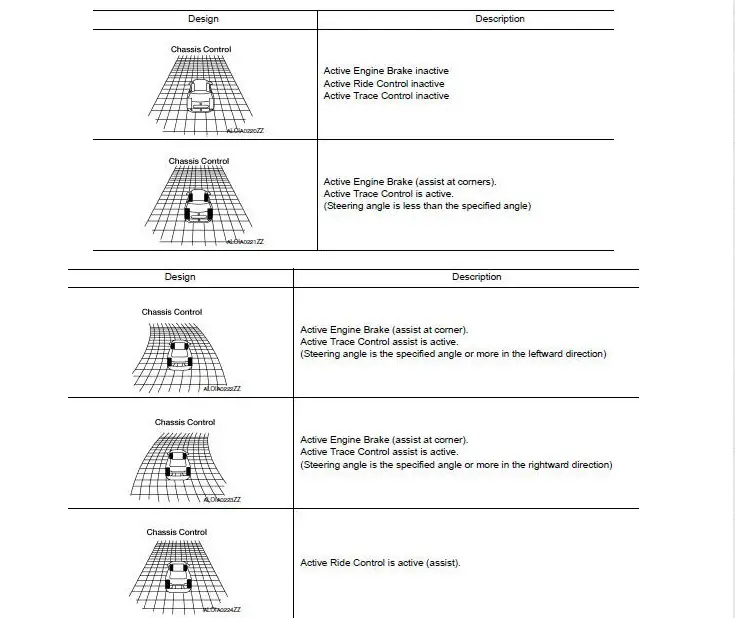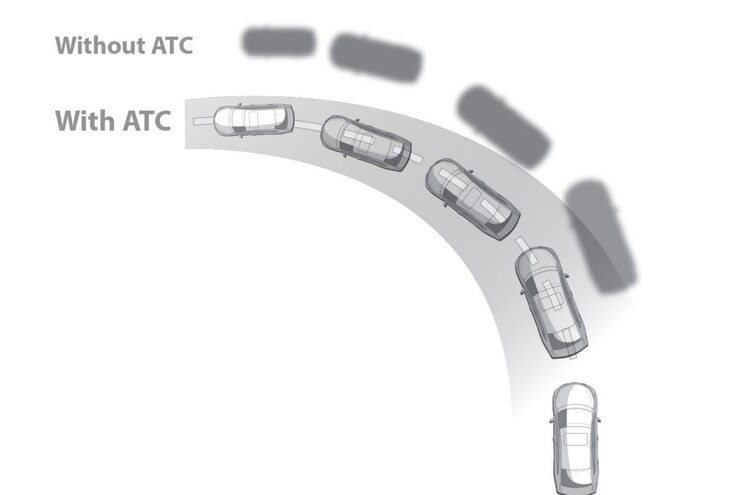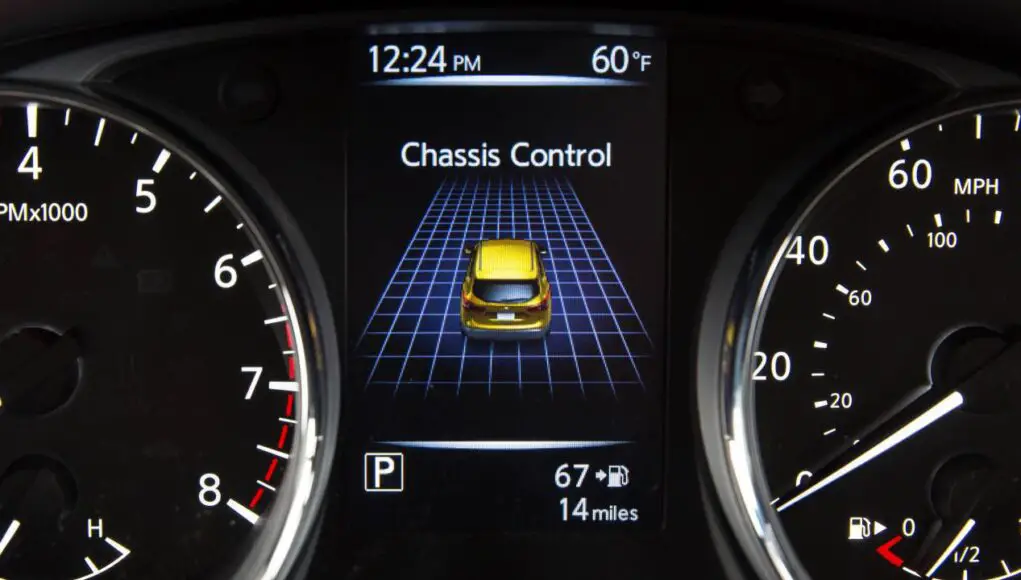Chassis control is a suite of Nissan technologies designed to deliver a more confident, fun,& comfortable driving experience.
I recently enjoyed a week-long rental with a 2019 Nissan Rogue Sport, taking the Rogue Sport on a series of day trips through some of California’s most demanding roads. These roads included the demanding twists and turns up to Yosemite Valley all the way to the harsh, unforgiving, pothole-filled roads of California’s Central Valley.
Several times, while negotiating a hard corner or literally bouncing out of my seat as the road turned into a roller coaster, I noticed a tiny Nissan Rogue Sport on a grid pattern labeled “Chassis Control” in my dash center display light up indicating some performance-oriented torque vectoring was happening.
Having driven various vehicles up Highway 140 to the Yosemite Valley, I also noticed it was easier to hustle the Nissan Rogue Sport up those notoriously twisty roads.
Only when I did a bit of Googling returning home did I find out what exactly Nissan Chassis Control was and how it was acting in tandem with my regular driving.
Nissan’s Chassis Control made my driving time with the Nissan Rogue Sport as enjoyable and confidence-inspiring as possible.
Here’s how it works.
What is Nissan Chassis Control
As mentioned, Nissan Chassis Control is a suite of three specific Nissan technologies; Active Trace Control, Active Engine Braking, and Active Ride Control.
Nissan Chassis Control takes in vehicle information such as Wheel speed, G-Forces, Yaw Rate, driving force and combines that with your steering, acceleration and braking inputs, altogether, in one continuous data stream to your vehicle’s computer.
Your vehicle’s ECU then uses your car’s brakes, engine, and CVT in a seamless symphony happening, presumably hundreds of times a second to improve how you corner, brake and your perceived level of comfort.
Here’s what CC looks like, when active on your dash.

Active Trace Control
First, there’s Active Trace Control or ATC. Active Trace Control evaluates, in real time, what maneuver you’re doing and automatically applies rapid and tiny applications of brake pressure, without you knowing, to better achieve what you’re doing.
According to Nissan Chassis Engineer Naoki Miyashita, ATC turns you into a canyon carver found only in experienced drivers.
Naoki Miyashita: “Active Trace Control was launched with the Infiniti M in 2010. It was a form of automatic brake control, which intervenes to improve handling performance before the vehicle becomes unstable. The goal was to simulate an experienced driver in cornering—and using the brakes to maintain cornering line.“

According to a copy of a technical document from Nissan on NiRogue.com, ATC helps to keep you steady in corners, reduces lag during steering operation, achieves stable vehicle behaviour during quick lane changes and drastically reduces under-steer in a corner by applying brake pressure to the inner wheels.
Active Engine Brake
If you know to shift to a lower gear descending a mountain, you know your engine, with help from your transmission, can slow your car down without applying brakes.
In the corners, by using tiny brake applications, AEB helps you more easily trace corners.
Stopping in a straight, AEB helps to shorten overall braking pressure and enhance braking feel.
Active Ride Control
Give it full gas off the line and your car pitches up. Slam the brakes and your car pitches down.
Nissan’s Active Ride Control uses that engine torque to raise and lowering a vehicle to counteract the pitching movement going over dips, crests, and uneven road surfaces.
ARC doesn’t just work on straight roads, it’s active on corners too. By adding/subtracting engine torque, handling is enhanced by controlling front and rear wheel balance.
Aiding that engine torque physics principle are the brakes. Nissan learned that a slight brake application intensifies the dampening forces of shock absorbers. Adding in slight brake applications with engine torquing further aids in counteracting what would otherwise be an uncomfortable ride.
Take my word for it, Chassis Control works!
Like most rentals, I just got into the Nissan Rogue Sport and drove. I knew nothing about Nissan Chassis Control and only discovered the system well into my third day of driving after scrolling through the center dash menu items.
By that time, I’d already got used to the Nissan Rogue Sport’s driving demeanor. Although a crossover, the Rogue Sport was fun to drive. I took corners, both going up and downhill, at the posted speed limit and slightly above confidently.
To my surprise, I even caught up to a mid-2000s BMW X5, a performance oriented SUV, and seriously wondered why the X5 was driving so slow, depressing their brakes multiple times mid-corner and, altogether, struggling to head down Highway 140.
My rental Nissan Rogue Sport and all its 140 HP was surely no match for a mighty BMW, or so I thought.
I also experienced Nissan’s Active Ride Control, first hand confidently driving fast over Merced County’s pothole-filled roads. Even driving over large holes and going over Highway 99’s whoops, the Rouge Sport never felt unsettled or nausea-inducing. I knew ARC was working because I saw all four wheels light up going over a rough stretch of road.
Critics might say Nissan’s Chassis Control might wear your brakes prematurely, but if that’s true, the benefits of confidence inspiring driving and more comfort outweigh the cost of some brake pads now and then.
A quick google reveals a decent (full) set of front and rear brake pads for a Nissan Rouge Sport will run you about $100 total. You easily drop that match for a dinner at Chilis, yet you’re willing to not enjoy Nissan Chassis Control’s Benefits to potentially save an extra $100?
Nissan Chassis Control, it won’t make you an F1 driver but it will make you more confident driver.
Additional Sources:
Nissan ARC
Nissan AEB
Nissan ATC
Nirouge




[…] there’s the confidence-inspiring grip. Whereas Nissan’s Chassis Control takes most of the credit for making me feel like a cornering pro, if I have poor tires, no amount of […]
I would like to know what shop you know of that replaces break pads for $100. That’s early 1960s prices. Not 2022 prices. Unless you know something the rest of us do not know. :>)
How often with regular driving does chassis control activate? I drove around tight corners and didn’t see any changes to the chassis control screen. I had to brake while turning or really turn hard to see a blue curve appear on the screen. I only saw the tires turn blue once. I don’t know why.